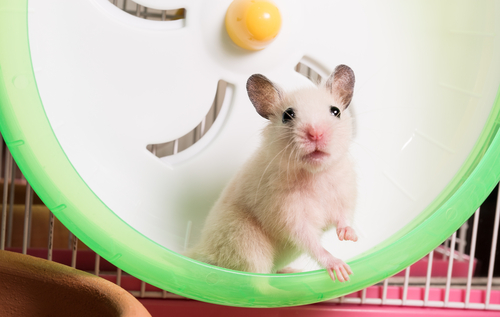Rett Animal Model Seen to Share Patients’ Complex Learning Difficulties

Problems with skilled learning tasks that involve motor function and making sense of sounds — known to be affected by Rett syndrome — were seen in rat model of the disease and consistent with these deficits in patients, a study reported.
These findings could support work into therapies that address patients’ problems with these complex behaviors by expanding the usefulness of an animal Rett model, its scientists wrote.
Their study, “Deficits in skilled motor and auditory learning in a rat model of Rett syndrome,” was published in the Journal of Neurodevelopmental Disorders.
Most Rett syndrome cases are caused by mutations in the MECP2 gene, carrying instructions for the protein MeCP2, which regulates the activity of other genes that play a critical role in brain development and function.
Mouse and rat models carrying mutations in the Mecp2 gene — their equivalent to the human gene — have been developed to further understand the disorder and support the development of effective therapies. These models have helped to provide valuable insight into Rett’s underlying mechanisms, but tests of complex behaviors in the animals are in early stages.
One complex behavior known to be altered in Rett patients is skilled learning, or a gain in patterns learned through repetition. People with Rett can have problems with auditory processing, which refers to hearing and understanding speech and other sounds.
Researchers at The University of Texas at Dallas trained female rats with Mecp2 gene mutations (along with normal rats as a control group) to perform a skilled forelimb reaching task to evaluate motor function, and a speech discrimination task to assess auditory processing.
“Characterization of more complex behaviors known to be altered in Rett syndrome could expand the utility of animal models,” they wrote.
For the skilled motor task, the animals had to press a lever to get a reward, which required them learning to reach outside of the cage and pressing the lever twice in rapid succession. Each stage of the learning process was monitored, requiring different criteria for trial success and reward delivery.
Compared with control rats, Mecp2 rats were significantly slower to progress through training, and a smaller portion completed the final stage of training within 12 weeks. Mutant rats also showed significantly slower lever pressing speed and completed significantly fewer trials than did control animals.
“Together, these results indicate an impairment in skilled motor function in Mecp2 rats,” the scientists wrote.
Auditory processing was assessed with a speech discrimination task, in which rats were trained to respond to the target sound ‘dad’ within three seconds. A correct response was rewarded with a food pellet. Each rat was then trained to respond to ‘dad,’ while ignoring the sounds ‘bad,’ ‘sad,’ ‘deed,’ and ‘dood,’ with or without varying levels of background noise.
The percentage of rats correctly responding to ‘dad’ did not significantly improve in either group over five weeks of training. However, supporting suggestions that overall auditory processing remains intact in the rat model of Rett, these animals did respond, although more slowly than those in the control group.
In the absence of background noise, rats with Mecp2 mutations demonstrated significantly impaired performance compared to controls over three weeks of testing. Background noise significantly degraded performance in both groups, but the rat model of Rett performed significantly worse than controls across multiple noise levels.
“These findings indicate that Mecp2 rats exhibit deficits on a complex auditory task that are not apparent in a simple task,” the investigators wrote.
Direct electrical stimulation of the brain after motor training to measure the impact of body movement found no differences comparing mice with Mecp2 mutations with control mice, suggesting that motor impairments arise from changes in the function of synapses — the site of transmission of electric impulses between two nerve cells.
Social behavior and standard behavioral assessments also found no differences between the two groups of animals.
“Together, these findings illustrate novel deficits in skilled learning consistent with clinical manifestation of Rett syndrome and provide a framework for development of therapeutic strategies to improve these complex behaviors,” the researchers concluded.






